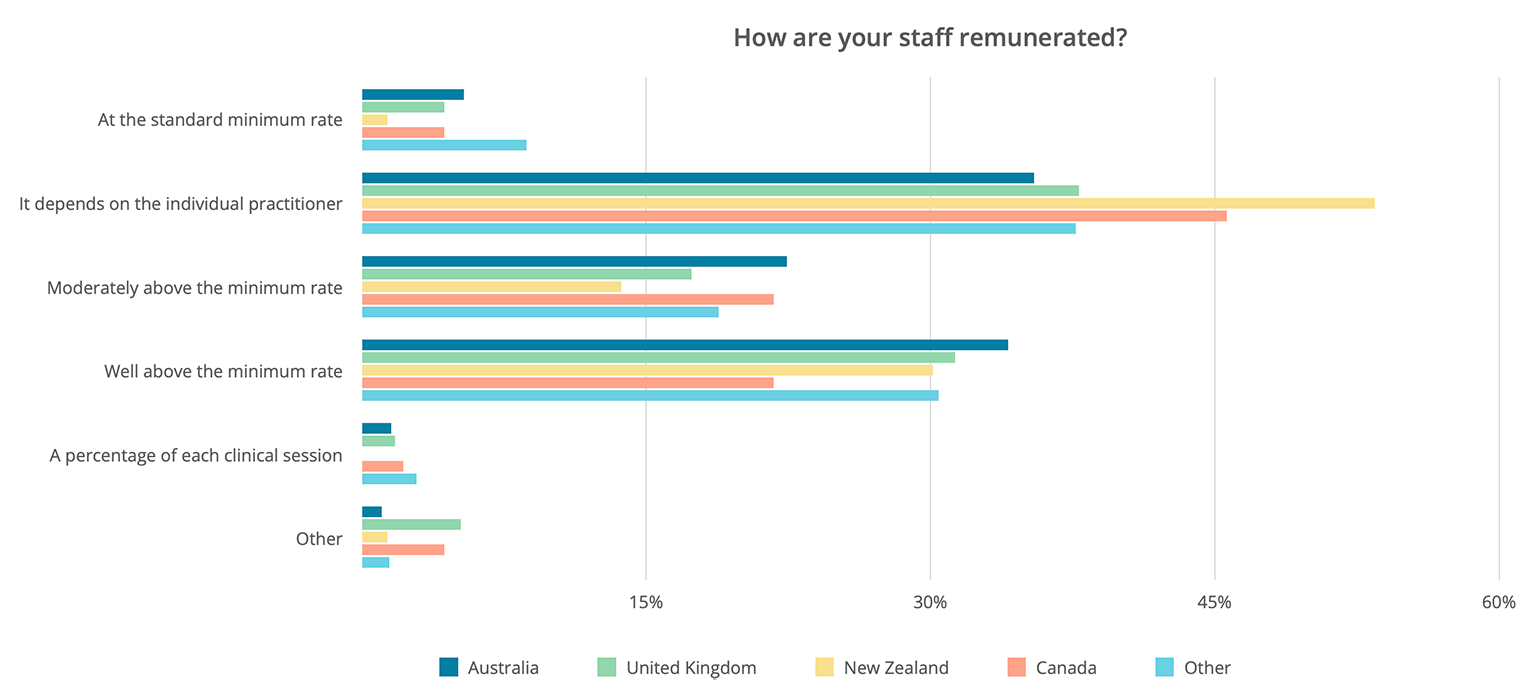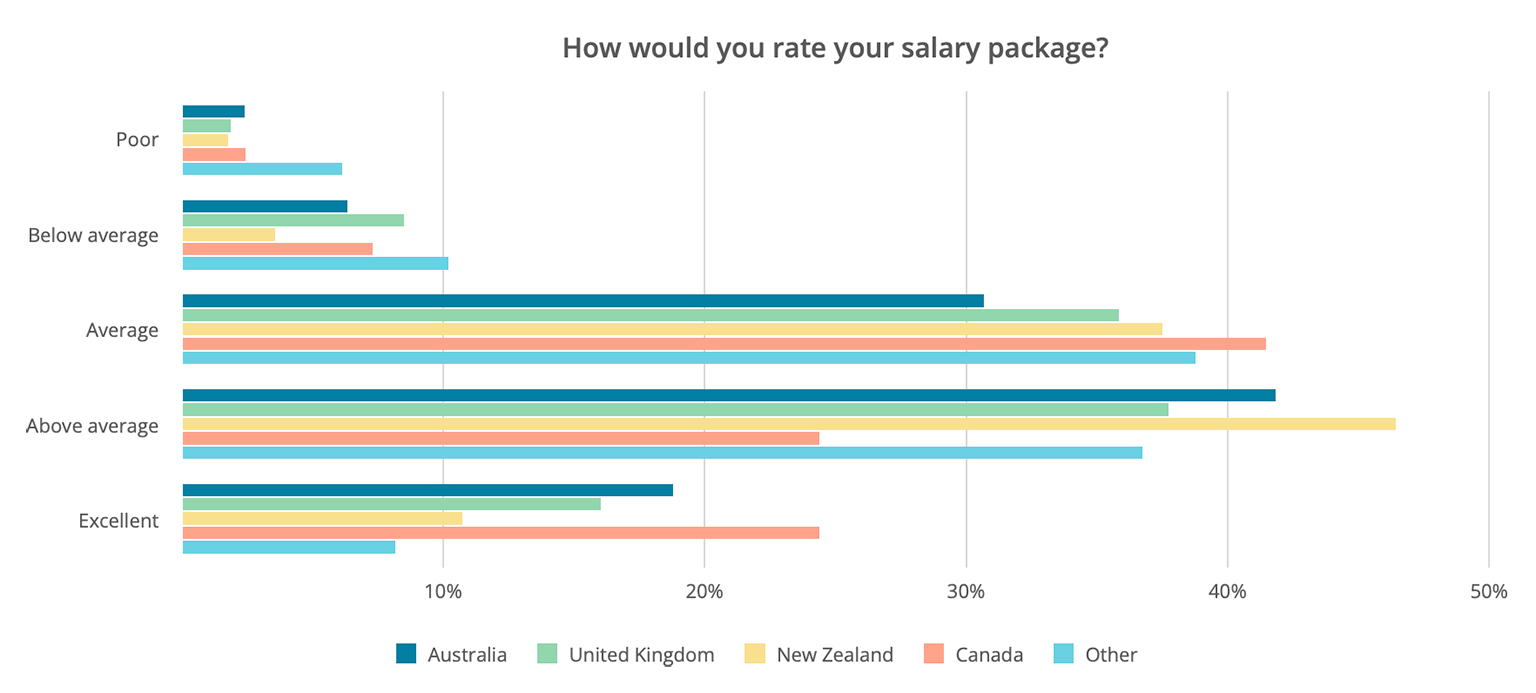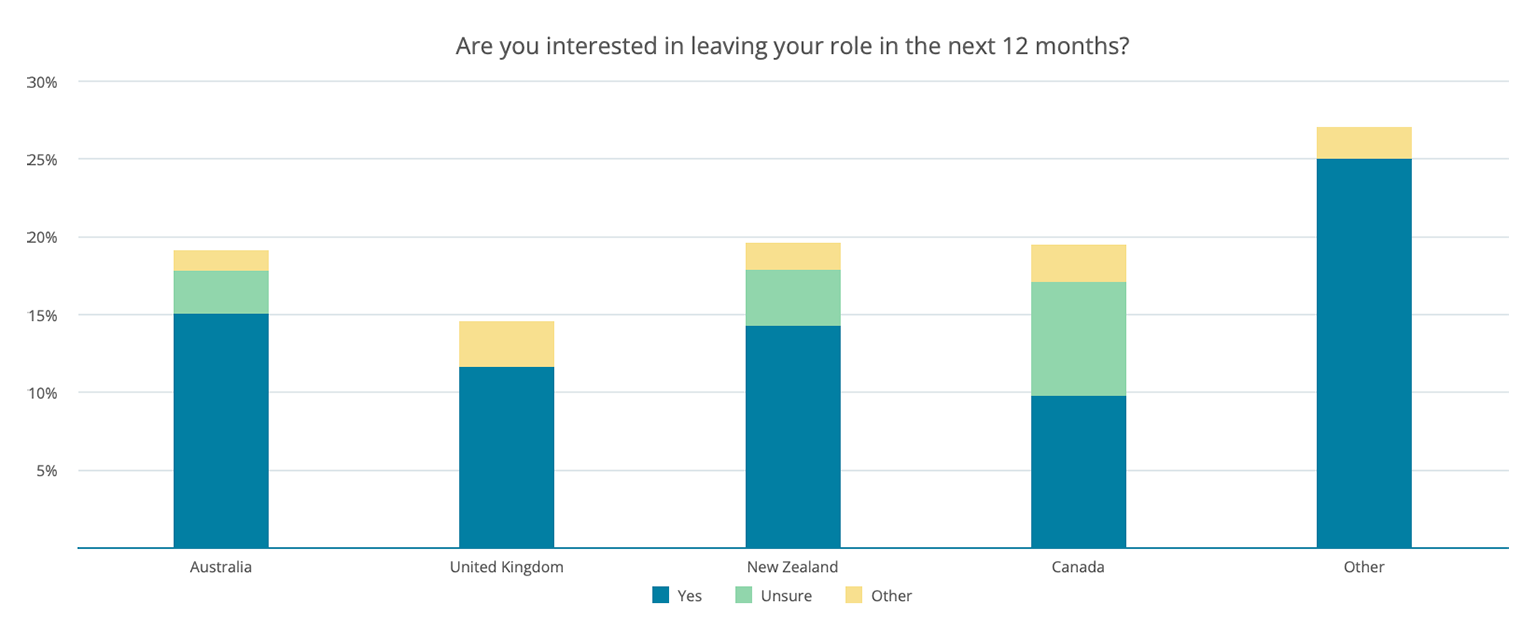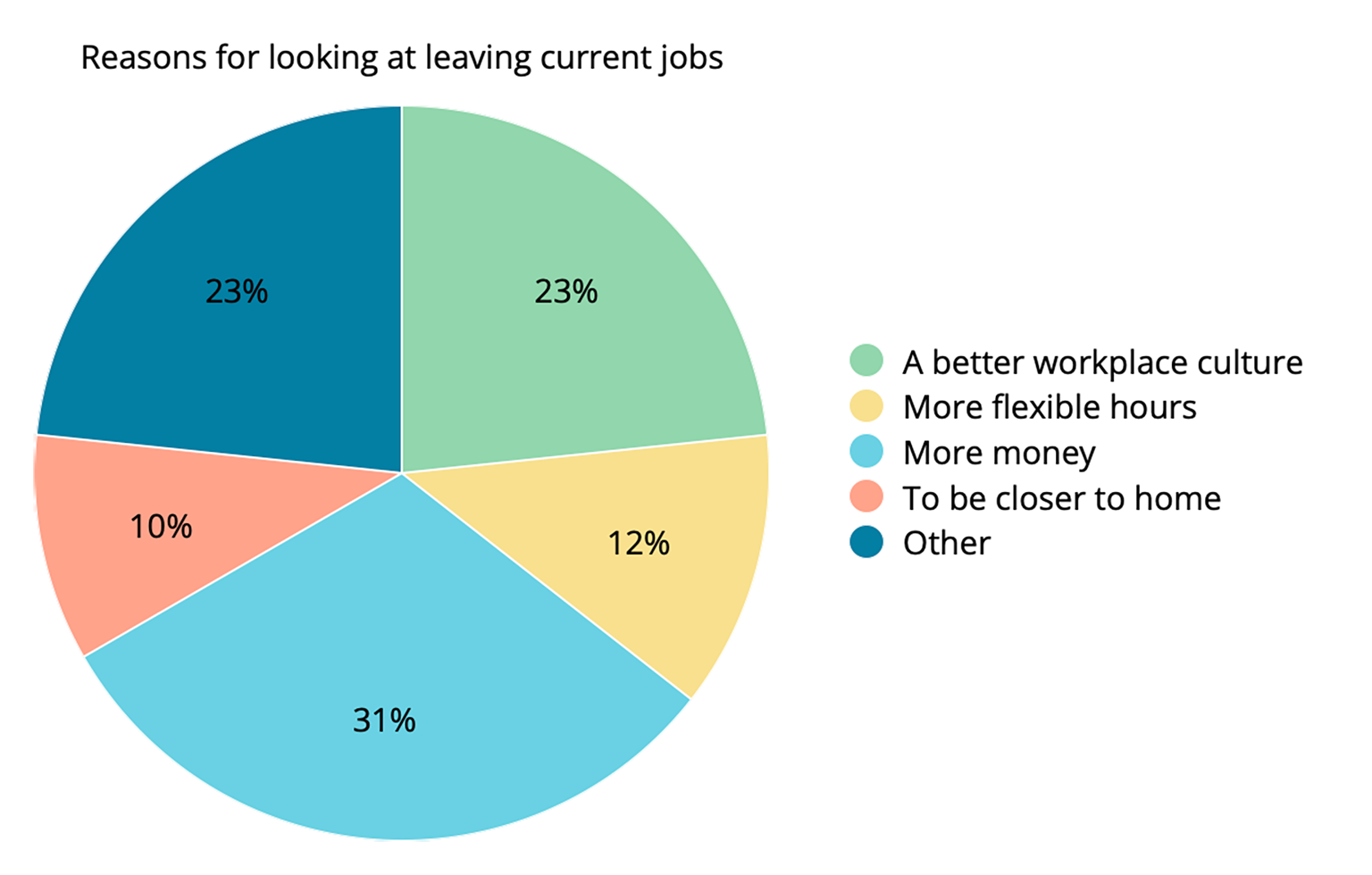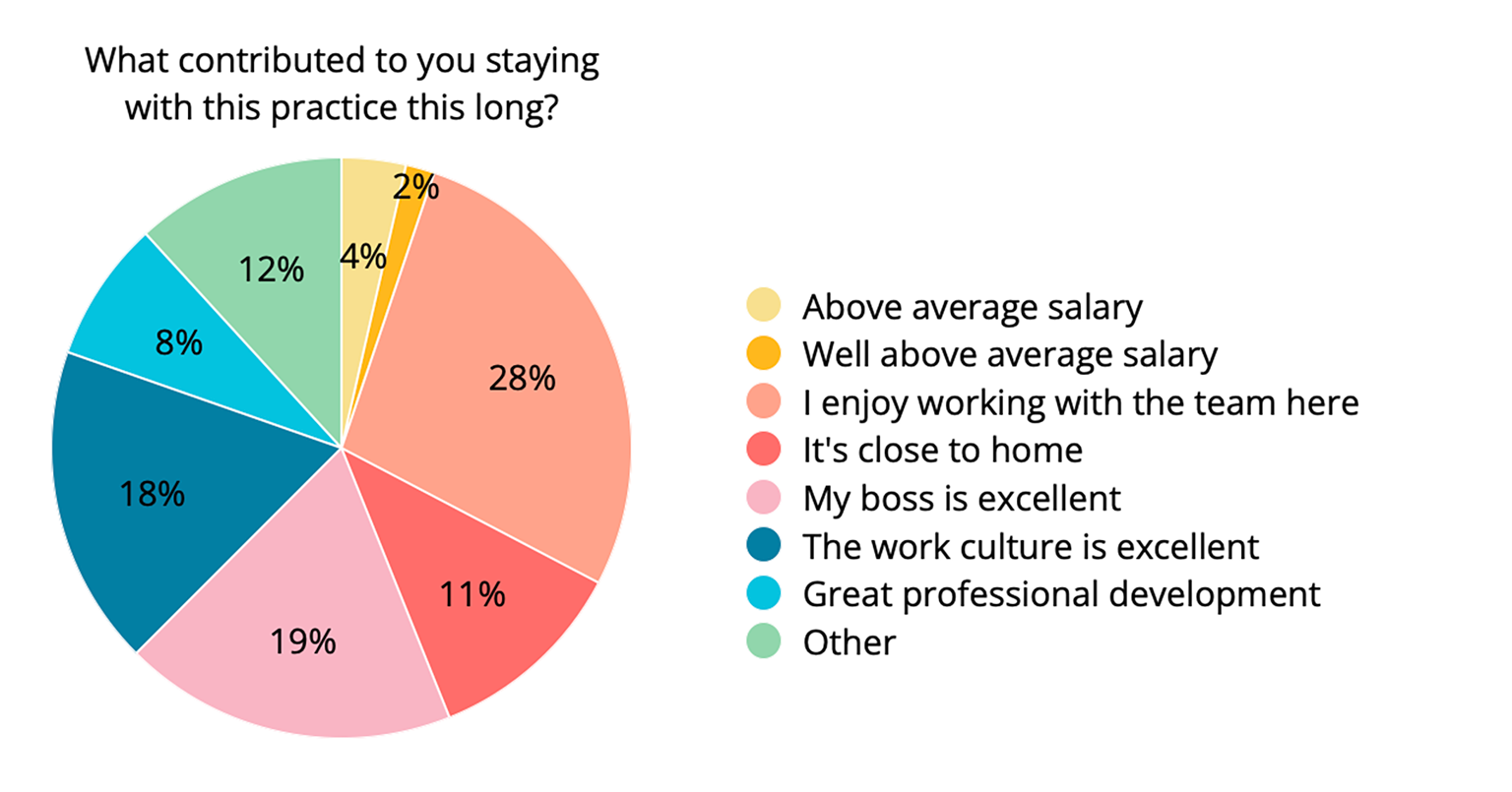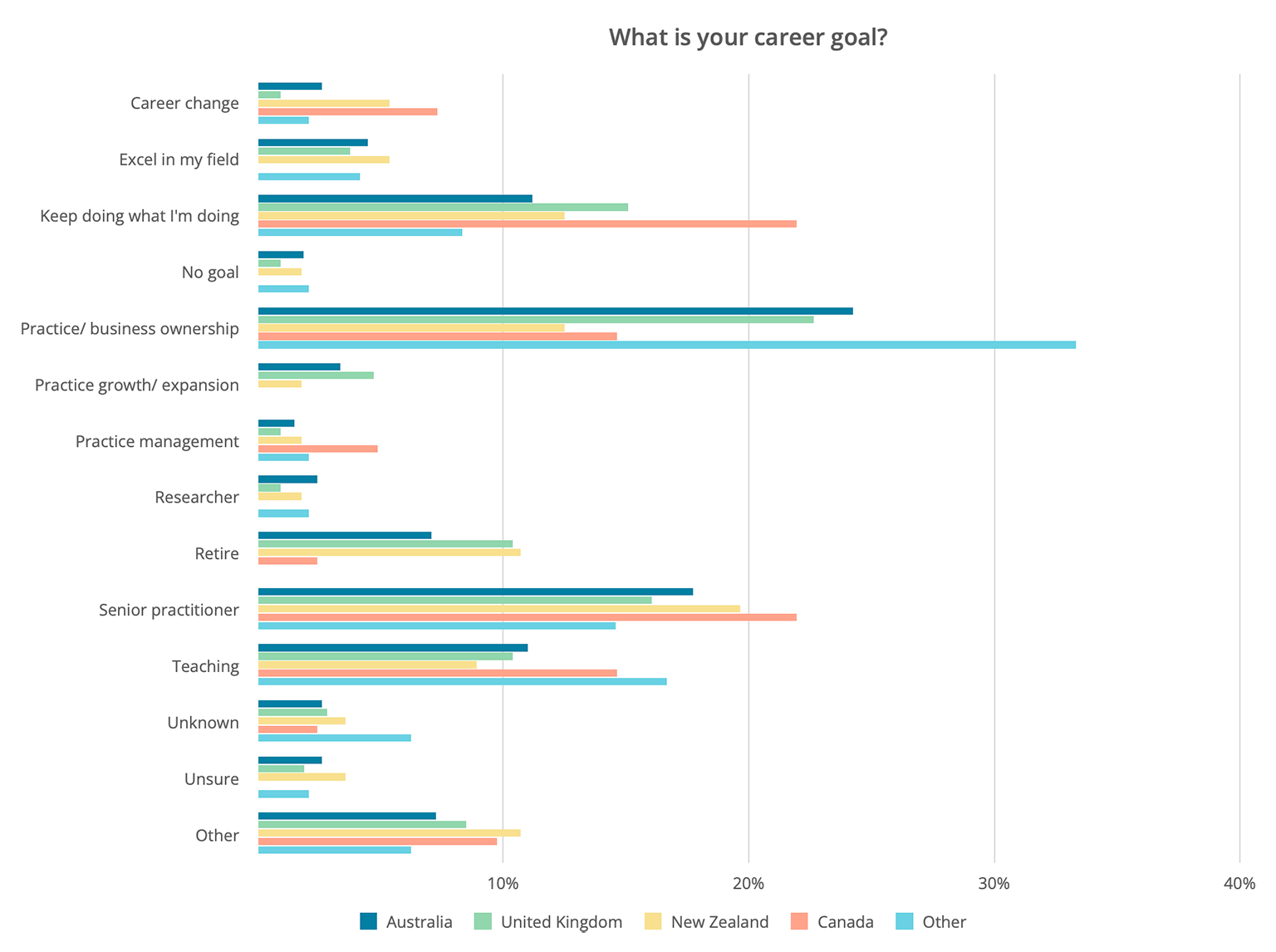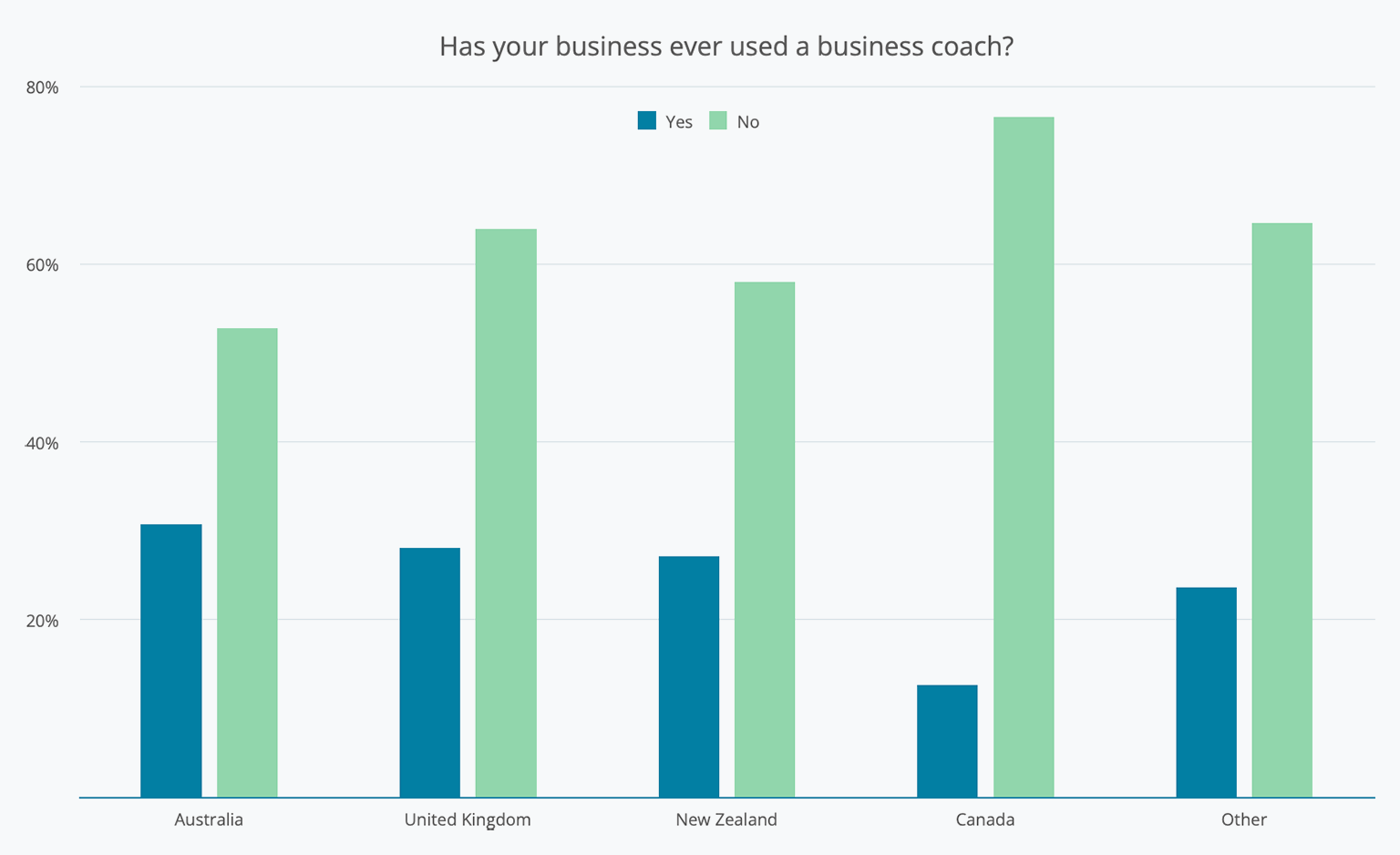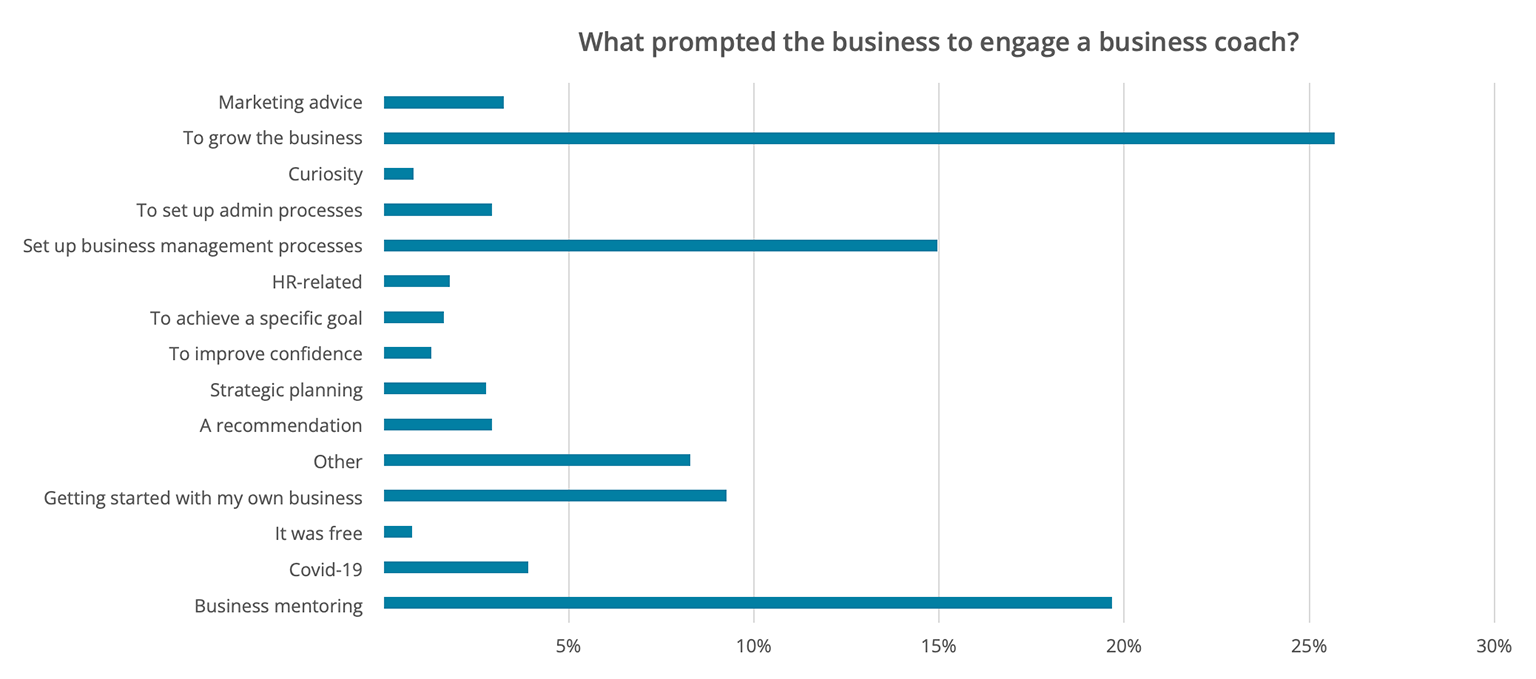Cliniko 2021 allied health survey results summary: Part 1
This is what your survey responses told us about daily life – appointments, referrals, Telehealth, and the day to day challenges of running an allied health clinic.
This is what your survey responses told us about money matters — employment, salary, career goals, and your allied health practice as a business.
Kate Hunter·
Welcome to the second part of the Cliniko survey summary. This is where we’ll take you through all things related to employment and business in allied health. We had both employers and employees respond to our questions, so you’ll see a few different perspectives on issues like salaries and career goals. Read on for the full picture!
Also, if you haven’t checked out Part 1 of our allied health survey yet, see it here – from appointments to healthtech, it covers what daily life looks like for an allied health professional.
The way that allied health professionals work varies a fair bit between countries, but generally speaking:
We don't have more context for this, so it’s hard to know exactly why the UK and New Zealand are working differently.
Salary structure also looks quite different across countries – while an hourly rate is most common in the UK, Canada and New Zealand, in Australia and elsewhere in the world, employees are most likely to get paid an annual salary plus commission (totalling 41% of practitioners in Australia and 75% worldwide).
In good news, those of you who employ staff report that you’re mostly negotiating salaries depending on the employee or paying well above the minimum salary. Those of you who are employees back this up – a vast majority of you describe your salary as above average or excellent. Hot tip for allied health professionals: ask for what you think you're worth!
Around 15% of you are looking to leave your roles in the next 12 months, which is consistent across different countries.
If you’re thinking about moving on, your reasons for this are likely to be that you’re:
And yet those of you who have been in your current role for more than ten years are the least likely to cite money as the reason for staying so long – the top reasons you gave for long tenure are all people-related (it’s mainly your team, boss or work culture that’s kept you there!).
Owning your own practice is a main career goal that ranges across different allied health professions, but this is a particular motivation for:
Reaching senior practitioner status is also a key goal for many of you, with an especially high number of occupational therapists and speech pathologists (36% of both professions) reporting this as the main focus.
Many of you are aware that treating patients is only one aspect of running a successful healthcare business and have started taking active steps to increase your business knowledge. Business coaches have become popular, especially with those of you based in Australia, New Zealand, and the UK. This isn’t specific to a particular profession – it’s a general trend across the allied health industry. The main reasons you give for seeking business coaching include to:
We were happy to hear that your experiences with business coaches have been largely positive: 68% of you who’d used a coach report that you are likely or very likely to recommend coaching to others.
If you’ve read both parts of this survey, you’re up to date with everything we learned (click here for Part 1). But this is just the beginning! Stay tuned over the coming months – we’ll be following up these overviews with a series of in-depth articles exploring these results. Thanks for reading, we hope it gave you some new insights into what’s currently happening in the allied health industry.
This is what your survey responses told us about daily life – appointments, referrals, Telehealth, and the day to day challenges of running an allied health clinic.



